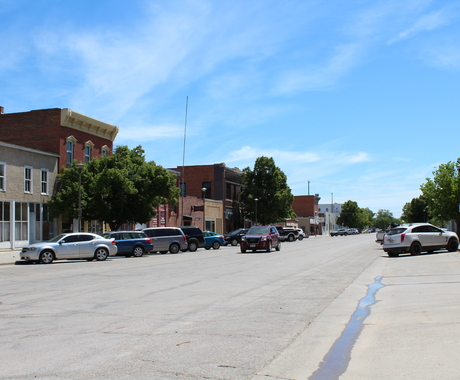By Cody Smith, former staff member
Across rural America, communities are increasingly depending on high-speed internet to complete an education, talk to their doctors, or adopt the latest farm technology. Meanwhile, access to broadband internet speeds has become a necessity in today’s digital economy. If businesses wish to compete with one another, a strong online presence has become a requirement, not a luxury. As we advance deeper into the 21st century, access to broadband will continue to be an important indicator of quality of life for communities across the nation.
In December, the U.S. Department of Agriculture (USDA) announced their ReConnect Program to “connect rural areas that currently have insufficient broadband service.” The program will offer up to $600 million in loans and grants to expand broadband service in rural parts of the country. Projects that would receive funding must create access to internet speeds of at least 25 megabits per second (mbps) for download and 3 mbps for upload (the current standard for broadband).
Requirements state any project that would receive funding must be in communities with less than 20,000 people in which there is no broadband service or speeds that are slower than 10 mbps for download and 1 mbps for upload. The announcement seemingly provides hope for thousands of small, rural communities across the nation. However, the program willfully ignores a major barrier to broadband deployment that doesn’t have anything to do with providing funds.
Under current broadband service reporting methods required by the Federal Communications Commission (FCC), access is being overestimated. Twice per year, through Form 477, internet service providers (ISPs) report their service information to the FCC based on the Census blocks they serve. Census blocks are used to collect information on a variety of topics by the federal government, and there are 11,078,297 of them nationwide. If ISPs can serve one household in a Census block, the whole block is reported as having access to broadband speeds—even if their neighbors have no hope of gaining access.
Among the many issues this data collection method presents, a primary concern is that for thousands of rural Americans, the Census blocks they live in can span for many miles. In fact, there are more than 3,200 Census blocks in the U.S. that are larger than the District of Columbia, and eight blocks that are larger than the entire state of Connecticut. If a household miles away has access to broadband, it makes no difference to rural Americans who are trying to grow their small business, complete a school assignment, or seek medical advice.
Exacerbating the problem is how the FCC allows ISPs to report a Census block as served—even if there is not a single household with access—by claiming they could do so without “an extraordinary commitment of resources.” This term has no official definition through the FCC and is not standardized across the nation, allowing ISPs to use it as they see fit.
While not every state in the country utilizes Form 477 data to map broadband service, several of them, including Nebraska, rely on this faulty information to allocate resources and funding for rural broadband development. With USDA’s new ReConnect Program, it is likely that they, too, will be relying on inflated, erroneous data to decide who does and doesn’t receive project funding—determining which rural communities will continue to be left out of a 21st century economy.
Furthermore, the USDA has determined that communities where internet speeds are 10 mbps for download and 1 mbps for upload are ineligible for program funding. Having this requirement inherently puts rural communities and their business owners and students at a disadvantage. With this guideline, USDA has told Americans who wait more than two minutes to download a one-gigabyte file that they don’t need, or deserve, this assistance.
While the ReConnect Program is certainly a step in the right direction and could help elevate rural communities to a level playing field, ignoring the flaws in broadband service reporting methods is willfully ignorant. True strategic deployment of resources for rural broadband development would include a comprehensive goal of accurately evaluating access, which unfortunately, is not present here. States must take action to end the use of this flawed data in the allocation of limited public resources to expand broadband access. All Americans deserve access to broadband, regardless of where they live.





